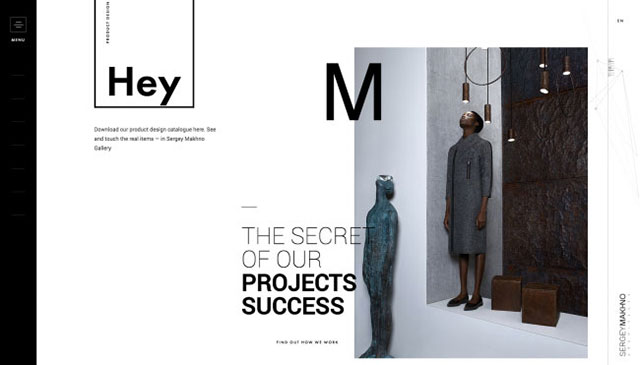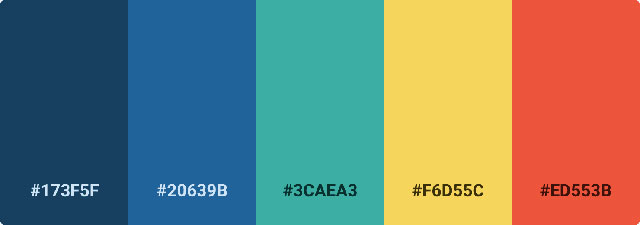In defense of “Eye Candy”
 In the society of designers, it is often possible to hear that true professionals build their work on the strict conformity of design to the brand’s corporate style or simply on the basic principles of design, and aesthetic beauty fades into the background. Living discussions on this issue lack one thing: understanding that aesthetics plays a huge role in cognition, perception and reaction.
In the society of designers, it is often possible to hear that true professionals build their work on the strict conformity of design to the brand’s corporate style or simply on the basic principles of design, and aesthetic beauty fades into the background. Living discussions on this issue lack one thing: understanding that aesthetics plays a huge role in cognition, perception and reaction.
Take a look at what “clothes” designers “now wear” with ordinary ready-made structured information; or how the term “eye candy” reduces the significance of graphic design as such. Language, at the present stage, narrows the concept of “design” to a simple “design”, as well as separates “aesthetics” and “usability” (as if they are two completely different areas). If we switch from individual graphic elements, and pay attention to general aesthetics – “the science of how we experience feelings” – we will find out that this very difference between how something works and how it looks does not really exists, it is contrived.
Why aesthetics?
To begin with, I will say that “aesthetics” deals with everything that relates to our feelings and is not limited only to our eyesight: it is hearing, touch, smell, and sensitivity in general. In other words: how we perceive and understand the world around us. As professionals in our field, we must pay attention to every design element that may affect the behavior of [a person] when interacting with the system, website, program.
Moreover, “aesthetics explores our emotional zone in relation to an object or action” (Wikipedia). In other words, aesthetics is not only the design features of buttons on Internet sites and other visual effects, but also the specific reaction of a visitor to these buttons. So, let’s formulate the problem: how do the chosen design decisions affect the user’s understanding and feelings, and how do the latter ultimately affect the behavior?
Aesthetics and perception.
Perception is a “process of knowledge.” We learn to learn the world, based on previous experience and following generally accepted patterns of behavior: What happens if I click here? What does this color mean? The science of cognition studies how a person cognizes things, and aesthetics plays a key role in the process of cognition of an object by man. In the example below: which quad is the button exactly?
Both buttons say “Search” in English.
In this case, aesthetics tells the function. The example on the right resembles a real button. The beveled edges and the gradient fill leave no doubt as to the function of this image – this is the button. In this example, the graphic design plays the role of a “beacon” – “you can interact with it” – which, in turn, plays an important role in the design. In other words: if it looks like a button, most likely it is a button.
Similarly, the following: well-designed forms of confirmation by the user of an action (on the website or in the program interface) have an element that the user should mark (check mark) and, most likely, there are shades of green: green – good; red is bad; yellow – worth thinking about. The designer in his work should take into account how our brain understands colors, shadows, shades, shading. The user usually does not notice such things until some designer does something stupid, like this:
“The question was successfully added,” says the English inscription on the tablet.
In this example, the graphic design conflicts with the meaning.
In this article, we look at how our brain interprets the meanings of colors, shadows, and other natural visible manifestations of the environment. Take a piece of paper and bring it closer to you: see how the shadow changes. These are the facts of the world around us that our brain perceives every day. When we transfer these facts to the monitor, they take with them all their signs that the brain is used to.
Nevertheless, aesthetics is not only functionality, and design is not only visual pleasure.
Aesthetics and impact.
When we talk about “impact,” we talk about feelings and emotions. No, not in the sense of “oh, your brand evokes positive feelings!”, But about how this effect affects usability. Let’s use the previous example, but with a few changes:
Both buttons say “Search” in English.
In terms of perception, these are buttons. Both are exactly buttons. However, if we turn to the study of attention, persuasion, choice, happiness, cognition, etc., then the conclusions will be as follows: on average, the more attractive button is more often pressed by more people. In support of this idea, I can quote a comment on the problem of feelings of the neurobiologist António Damásio:
“… feeling is not a luxury: it is an expression of the basic mechanisms for the regulation of vital activity, which have been developed over time, and which is vital for a person. It plays a key role in all manifestations of knowledge, reasoning and creativity. What is interesting – perhaps the feeling is taking part in the construction of consciousness … “



